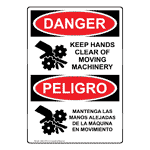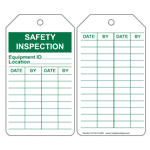
Guide to Machine Safety in the Workplace

Machine safety is critical to every industry because it ensures worker safety, maintains regulatory compliance, and reduces costs. You may be looking for fresh and efficient ways to keep your team safe while maintaining productivity and morale. Use this helpful guide for practical machine safety suggestions.
Why Is Machine Safety So Important?
Modern safety features have not eliminated the importance of machine safety for each member of the workforce. The potential for harm always exists when people interact with high-powered equipment.
It’s easy to forget how dangerous machines can be because they’re now an essential part of everyday life. However, on average, two workers die each day from contact injuries with machines. In 2022, 12.6% of work-related fatalities involved machines.
Even if a person doesn’t die, serious harm can result. Contact injuries caused 106,000 nonfatal injuries and illnesses that led to emergency room visits in that same year.
Such injuries are also costly for employers and employees. In 2022, the total work injury costs were $167 million. Also, workers missed 108 million work days due to injuries. An organization can keep those accidents and injuries to a minimum by practicing machine safety.
What Are the Basic Rules of Machine Safety?
The most basic rule of machine safety is understanding how to start and stop a machine. Either of these functions can help you get yourself or someone else out of harm’s way. Almost anyone can learn how to do so with most equipment, whether or not the individual is experienced with the machine.
Workers who work regularly with or around a specific type of machine should know about its core functions and the nature of its operation. This knowledge could help a person logically determine what steps to take during an emergency. A basic level of familiarity also lets an individual know where to look for machine safety labels or signs that provide safety instructions.
Other essential tips are:
- Wear the appropriate clothing and personal protective equipment around machines.
- Keep workstations clean and keep food and drink out of work areas.
- Minimize distractions and don’t leave equipment unattended.
- Follow manufacturer and company guidelines for machine operation.
- Report hazards as soon as you notice them.
Of course, workers who operate machines as their job assignment should have comprehensive knowledge about the devices they use. Even for highly automated machines requiring minimal input, operators need to understand what the machine does, why it does the task, and how it accomplishes that task.

What Are the OSHA Requirements for Machine Guarding?
OSHA standard 1910.212 requires machines to have sufficient guarding to protect the operator and nearby employees. In general, you should permanently attach the guarding to the machine itself whenever possible. Temporary solutions for inherent dangers are unacceptable. Additionally, the guard itself cannot create any other accident hazard.
OSHA machine safety guidelines encourage companies to pay particular attention to hazards at the point of operation, ingoing nip points, rotating parts, sparks, and flying chips. In particular, point-of-operation injuries present the greatest risks and should be a priority for machine guarding. Learn more about machine safeguarding.
Machine Safety Signs
 |  |  |  |
What Are Key Machine Safety Terms?
By making sure your team understands important machine safety terms, all can quickly communicate about how to prevent hazards or respond when an incident occurs. These expressions can also help them quickly communicate the injury type to first responders.
A few of the most important machine safety terms are:
- Contact injury: Harm that occurs to an individual when a body part touches a part of the machine. Common types of contact injuries are amputations, burns, crushes, falls, caught-in injuries, and avulsions (skin removal).
- Robots: A machine that can operate autonomously. While all robots are machines, not all machines are robots.
- Safeguard: An action or physical item that can prevent, protect against, or reduce the severity of an injury. All machines and workplace practices should have safeguards in place.
Ensure all team members understand these key terms and other industry-relevant expressions.
What Are Other Important OSHA Machine Safety Best Practices?
You must always keep machine safety at the forefront of your team members’ minds. These best practices will help with that objective.
Continual Training and Education
All new employees need comprehensive training sessions before using equipment for the first time. Even if they have previous experience, you need to ensure they are aware of current regulations and company guidelines.
Hold refreshers as necessary for existing team members. At these periodic sessions, update the team on new terminology and changes to regulations, company policy, and procedure. Continuing education helps workers stay alert and safe.
Your management team should regularly review your company’s training programs and manuals. Solicit employee feedback to be sure they communicate necessary information in a clear and concise way.
Maintenance and Inspections
Of course, regular maintenance of equipment is vital for machine safety. Don’t neglect to follow manufacturer guidelines for routine cleaning and inspections.
If you discover a machine is not operating properly, arrange for the appropriate repair or replacement. During maintenance and repair, remember to follow the lock-out tag-out protocol to ensure maintenance and repair crews do not suffer harm while working on a machine.
Machine Safety Signs and Labels
One of the best ways to give your team essential reminders is with proper machinery signage and labels. For starters, OSHA mandates specific machine safety signs as reminders for employees using dangerous equipment or entering hazardous areas. For example, “sharp object” or “high voltage” signs are bright and hard to miss, making sure passersby don’t unintentionally head into danger.
In the case of an emergency, machine safety labels can guide someone who is not a machine operator through how to safely stop a machine and get an injured person out of harm’s way. It’s also important to post safety signs with emergency phone numbers and evacuation routes that show what to do during a crisis.
Encourage Machine Safety With Compliant Signs and Labels
Machine safety is the responsibility of everyone in the workplace. Putting up compliant signage is a critical step to ensuring that workers have the proper reminders for the tasks at hand. To obtain effective signage for your team, visit ComplianceSigns.com to find what you need:

